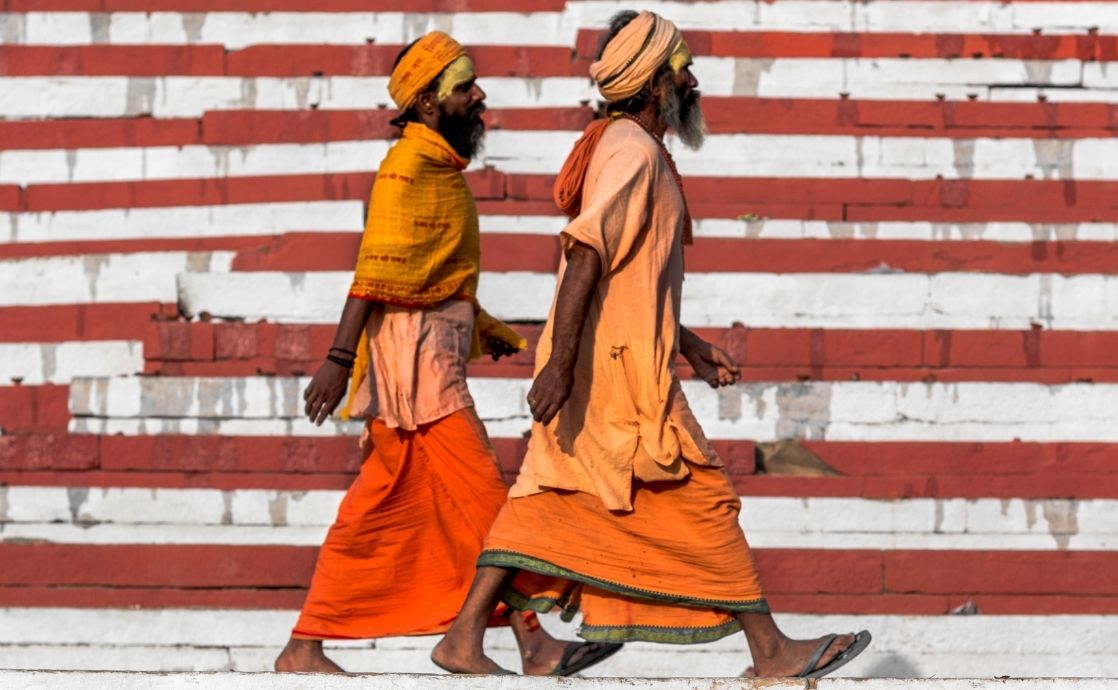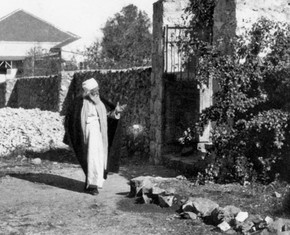The views expressed in our content reflect individual perspectives and do not represent the authoritative views of the Baha'i Faith.
Do Hindus believe in one God, or in many gods? Some people, including Hindus themselves, will answer “many gods,” because so many holy figures are named and worshipped in Hinduism. But is that true?
This isn’t an easy question to answer, not only because different opinions come from different people, but because Hinduism itself is so ancient, and like many other Faiths has dramatically changed since its inception thousands of years ago.
RELATED: Was Baha’u’llah the Return of Krishna?
The Baha’i teachings say that religion must be regularly renewed because of that very fact—because “imitations of ancestral forms of worship have arisen” that have differed from the original messages of ancient Faiths. Abdu’l-Baha explained this common dynamic in a talk he gave at a Japanese church in Oakland, California in 1912:
The foundation of all the divine religions is one. All are based upon reality. … the teachings of the holy Souls Who founded the divine religions are one in essence and reality. All these have served the world of humanity. All have summoned souls to peace and accord. All have proclaimed the virtues of humanity. All have guided souls to the attainment of perfections, but among the nations certain imitations of ancestral forms of worship have arisen. These imitations are not the foundation and essence of the divine religions. Inasmuch as they differ from the reality and the essential teachings of the Manifestations of God, dissensions have arisen, and prejudice has developed. Religious prejudice thus becomes the cause of warfare and battle.
If we abandon these timeworn blind imitations and investigate reality, all of us will be unified.
As a result of these man-made changes to religious practice and belief over time, we may never know whether the original Hindu teachings were essentially theistic, with a belief in one Supreme Being; or pantheistic, with a belief in many gods. But we do know that at least one Hindu reference supporting monotheistic thought comes directly from the Upanishads.
The Upanishads and the Philosophy of Neti-Neti
As we learned earlier in this series of essays, the Hindu scriptures contain four Vedas. Each Veda is large, and each is divided into four sections developed over hundreds of years. Each has Samhitas or hymns, which in purpose are not unlike Western church hymns; Brahmanas, which are commentaries on the hymns and which also explain the rites of priests (Brahmins); Aranyakas, which explore more mystical and esoteric topics and are generally only suited for scholars and hermits; and the Upanishads, short summaries or stories designed to connect the devotee to the Creator.

The Upanishads are amazing, and have become the most popular and accessible of the Vedas. Because they occur at the end of each Veda, they are also called Vedanta (the end of the Veda) and for many Hindus (Vedantists) they constitute the principal religious text. Because they are so unique and appeared later than the earlier Vedas, they are often spoken of as if they were separate from the Vedas.
While there were many, largely unknown authors of the Upanishads, a few are attributed to particular sages. Most notable is Yajnavalkya who taught that the truth about God can only be found through the negation of all thoughts about God. This philosophy, called neti-neti (not this, not this), expresses the Hindu way of maintaining that God is a single unity beyond all parts and multiplicities—just as the Baha’i teachings describe the Creator:
If your neighbors are Hindu, you can truly impress them if you tell them that you admire the philosophy of neti-neti, perhaps elaborating that many things are best described by what they are not. Light, for example, is neither a wave nor a particle.
Monotheism in the Upanishads
While there are over 200 Upanishads, 10 to 13 are considered “mukhya” (primary). There are several at the end of each Veda. These began to appear around the time of the Buddha (note: almost all dates in Hinduism are controversial), and, of course, have interesting names. One of the oldest and longest is called Brihadaranyaka, or “great forest.” Typically found at the end of the Yajur (Sukla) Veda, it has a beautiful invocation, which everyone can appreciate:
From the unreal lead me to the real!
From darkness lead me to light!
From death lead me to immortality!
This sounds quite a bit like the Bible verse: “You are my lamp, O Lord; the Lord turns my darkness into light” from 2 Samuel 22:29; or like Isaiah 42:16, where God says: “I will lead the blind by ways they have not known, along unfamiliar paths I will guide them; I will turn the darkness into light before them and make the rough places smooth. These are the things I will do; I will not forsake them.”
RELATED: The Return of Krishna: Which One?
The Brihadaranyaka Upanishad has a very important passage (3.9.1) explaining the oneness of God. It takes the form of a student asking his master about the number of gods. I’ve placed a translation below, but to make it more readable, I replaced the name of the student, Vidagdha Sâkalya, with the word “student,” and the name of the master, Yâgñavalkya, with the word “master.” I also replaced the Sanskrit word for instruction, nivid, with “instruction.”
Then the student asked the master:
’How many gods are there, O master?’ He replied with this very instruction.
’As many as are mentioned in the instruction of the hymn of praise addressed to the Visvedevas, viz. three and three hundred, three and three thousand.’
’Yes,’ he said, and asked again: ’How many gods are there really, O master?’
’Thirty-three,’ he said.
’Yes,’ he said, and asked again: ’How many gods are there really, O master?’
’Six,’ he said.
’Yes,’ he said, and asked again: ’How many gods are there really, O master?’
’Three,’ he said.
’Yes,’ he said, and asked again: ’How many gods are there really, O master?’
’Two,’ he said.
’Yes,’ he said, and asked again: ’How many gods are there really, O master?’
’One and a half (adhyardha),’ he said.
’Yes,’ he said, and asked again: ’How many gods are there really, O master?’
’One,’ he said.
There you have it: monotheism. Hindus see only one God behind their ubiquitous plethora of gods.
















Comments
Sign in or create an account
Continue with Googleor